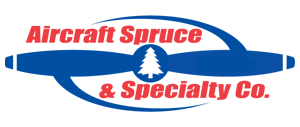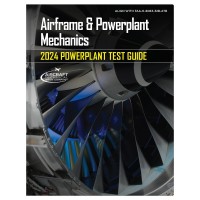EASA Module 07 - Maintenance Practices
MFR Model# 0116-EASA-B
Overview
|
Aviation Maintenance Practices covers workshop procedures and the daily skills required of the aviation maintenance technician, From tools and test equipment, to sheet metal work, to drawings, fits & clearances, to building wire harnesses; each topic is explained in step by step detail. You will learn by understanding concepts, not just rote memorization and you will learn how and why each skill is useful in the day-day tasks of the aircraft technician in an aviation maintenance environment.
This book is fully compliant as EASA Part 66 module 7 for the B1 license and has been given approvals by numerous EASA based civil aviation authorities. |
WARNING: Cancer and Reproductive Harm - www.P65Warnings.ca.gov. |
Table of Contents
7.1 Safety Precautions - Aircraft and Shop- Safe working practices including around electricity, gases, oils, and chemicals. Action in case of fire and knowledge of extinguishing agents.
- Care and control of tools and materials; allowances and tolerances; standards of workmanship. Calibration of tools and equipment.
- Common hand tools and power tools; precision measuring tools; lubrication equipment and methods; functuion and use of electrical test equipment.
- Operation, function, and use of avionic general test equipment.
- Drawing types, symbols, dimensions, tolerances, and projections; title block information; microfilm and computerized presentations. ATA Specification 100. ISO, AN, MS, NAS, and MIL standards. Wiring and schematic diagrams.
- drill sizes, classes of fits; schedules of fits and clearances for aircraft and engines; limits of bow, twist, and wear; standard methods for checking shafts, bearings, and other parts.
- Continuity, insulation, and bonding techniques and testing. Use of hand and hydraulic crimp tools. Testing crimp joints. Connector pin removal and insertion. Co-axial cables, testing and installation. Identification of wire types, inspection criteria, and damage tolerance. Wire protection techniques; cable looming and support; cable clamps, protective sleeving including heat shrink and shielding.
- Riveted joints, spacing and pitch. Tools for riveting and dimpling. Inspection of riveted joints.
- Bending, belling, and flaring aircraft pipes. Inspection and testing of pipes and hoses. Installation and clamping of pipes.
- Inspection and testing of springs.
- Testing, cleaning and inspection of bearings. Lubrication requirements. Defects of bearings and their causes.
- Inspection of gears and backlash. Inspection of belts, pulleys, chains, and sprockets. Inspection of screw jacks, lever devices, push-pull rod systems.
- Swaging of end fittings. Inspection and testing of control cables. Bowden cables, aircraft flexible control systems.
- Soldering methods and inspection. Welding and brazing methods, and inspection. Bonding methods and inspection
- Center of gravity/balance limits and calculation and use of relevant documents. Preparation and weighing of aircraft.
- Aircraft taxiing, towing, and associated precautions. Aircraft storage methods. Refueling and defueling procedures. De-icing and anti-icing procedures. Electrical, hydraulic, and pneumatic ground supplies. Effects of environmental conditions on handling and operation
- A) Defects and visual inspection; corrosion removal, assessment, and reprotection.
- B) general repair methods; aging, fatigue, and corrosion control programs.
- C)Non-destructive inspection including penetrant, radiographic, eddy current, ultrasonic, and boroscope methods.
- D) Disassembly and reassembly techniques.
- E) Troubleshooting techniques.
- Inspection following lightning strikes and HIRF penetration. Inspections following heavy landings and turbulence.
- Maintenance planning; modification procedures; stores procedures; certification/release procedures; interface with aircraft operations; inspection and quality control assurance; control of life limited procedures.
Specifications
- Publisher: Aircraft Technical Book Co.
- ISBN-13: 9781941144930
- Copyright Date: 2019
- Edition: 3rd
- Pages: 527
- Binding: Paperback
- Dimensions: 11.0" x 8.5"
- Book Weight: 1.0lbs
- eBook
- File Type: standard pdf ebook
- Print: unlimited
- Copy/Paste: unlimited
- Offline Access: yes
- Search: always
- Bookmarks: always
- System Reqs: Windows, Macintosh, iPad, and more
Version Types
Softcover Book - Printed book with heavyweight cover stock.
eBook EB - A protected document designed for reflowable content. Also referred to as an ePub or "Electronic Publication" format. Easily viewed on both small and large screens. Text, images, and pages will adapt or reflow to fit the screen size of the device, so zooming is not necessary to read. Text size can be adjusted in an ebook reader app. Visit AC Technical Books -eBooks for more details on how to setup your device.
Q&A
Please note, Aircraft Spruce's personnel are not certified aircraft mechanics and can only provide general support and ideas, which should not be relied upon or implemented in lieu of consulting an A&P or other qualified technician. Aircraft Spruce assumes no responsibility or liability for any issue or problem which may arise from any repair, modification or other work done from this knowledge base. Any product eligibility information provided here is based on general application guides and we recommend always referring to your specific aircraft parts manual, the parts manufacturer or consulting with a qualified mechanic.








 FREE Shipping
FREE Shipping






